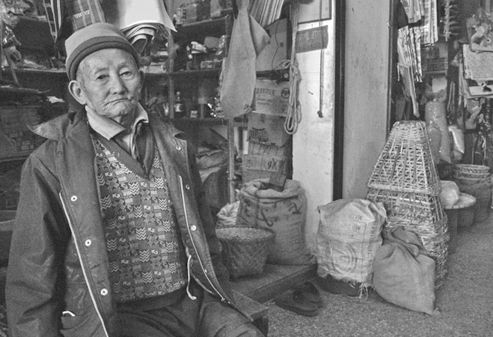Sikkimese women and the denials
- cdcesikkim
- Mar 8
- 4 min read
Updated: Apr 3
TSHERING EDEN

Women in Sikkim are safer, happier and freer than in other parts of the country is an oft-heard statement. Such definition by comparison offers only a shallow interpretation of the status of Sikkimese women when the ground reality is much more complicated. Much like Article 35-A of Jammu & Kashmir that has now been repealed, antiquated laws continue to deprive Sikkimese women of their rights.
On 27 January 2015 the State Cabinet decided to make it mandatory for all married daughters of the old settlers [long-time residents who did not take Sikkimese citizenship when it was still a kingdom] of the state to furnish their own, their father’s and their husband’s residential certificates when applying for trade licenses, contract works, driving licenses and other benefits and services.
Less than a month later, on 23 February, the Cabinet approved partial modification to Notification No. 66/Home/95 dated 22 November 1995 as amended pertaining to issue of Certificate of Identification and with it denied the provision of CoI to nonlocal women married to Sikkimese.
Certificates of Identification are essential for just about everything in Sikkim, from being able to conduct business to applying for government employment to receiving State benefits. For old settlers, this role is played by the residential certificates.
Daughters-in-law, who had been included into the Sikkimese fold with the 1995 amendment, were denied again as the protection of local status was further reinforced, but Sikkimese daughters who found spouses outside had been cast away much earlier.
On 15 March 1969, the Sikkim Durbar had initiated a proclamation stripping Sikkimese women of their citizenship if they married someone not belonging to Sikkim which was then a separate kingdom. More than half a century later, this law continues to be in practice. Social and political discourse on identity in Sikkim is mostly dominated by the “local” and “nonlocal” issue where the woman finds little or no space at all. The identity issue is undeniably a complex one and with much at stake, governments have forever struggled to keep everyone happy. While the problems with rules such as those mentioned above run deep and wide, even on the surface it sounds obnoxious for a woman's identity to be based on the identity of not one, but two men – her father’s and her husband’s – at all times!
A Sikkimese woman will be considered Sikkimese only if both her father and husband are Sikkimese. In the case of non-local women marrying Sikkimese men, it is again the woman who is made to bear the brunt, being refused acceptance as a local and thereby denied economic or professional prospects in the State. Whether women are willing to bear this burden or not, is a question that is not asked often and even if it is, the answers come in a coagulated mix made mostly of the local-nonlocal positions and peppered lightly with that of gender equality and hence end up making no sense at all.
The question of Sikkimese identity versus women’s identity is not a subject that can be easily broached in Sikkim due to the fear of stepping on too many toes. What or who is Sikkimese is in itself a problematic question that we have never got around to answering.
If married to a non-local, a Sikkimese woman loses her citizenship, she cannot pass on her inheritance to her children. For women who remain “pure” Sikkimese, in 2008, the Sikkim Succession Bill became an Act and proposed to allow equal property rights to daughters in the State. It was hailed as a major milestone in women’s empowerment in the state. However, ten years on, this Act is yet to be officially notified. One can’t help but wonder why.
The same year the state also put in place 40% reservation for women in the Panchayats [since increased to 50%]. It was definitely a huge step forward for women in the state but written in fine print were the words stating that rights under the new Act did not extend to women married to non-locals. The rules are also incomplete because they remain silent on whether a woman reclaims her Sikkimese status if she divorces her nonlocal husband or what identity status extends to children born out of wedlock to Sikkimese women. This is not nitpicking, but sharing of real-life situations which remain unaddressed. No thought has clearly been spared to wonder what would happen to Sikkimese women married into equally “protective” regimes like, in the North East, or for that matter daughters from such societies married into Sikkim – they will end up belonging to neither place and would have no career or livelihood prospects at either address. Adopted by the United Nations on 18 December 1979, the Convention on Elimination of all Forms of Discrimination against Women [CEDAW] entered into force on 03 September 1981. It was ratified by India in 1993. The Convention defines discrimination against women as “...any distinction, exclusion or restriction made on the basis of sex which has the effect or purpose of impairing or nullifying the recognition, enjoyment or exercise by women, irrespective of their marital status, on a basis of equality of men and women, of human rights and fundamental freedoms in the political, economic, social, cultural, civil or any other field. ”Figure out for yourself how Sikkim’s conditional acceptance of its daughters compares against CEDAW.As we celebrate the protection of Sikkimese identity, must we moan the loss of women’s identity?
[This article was first published in East Mojo in 2019]







コメント